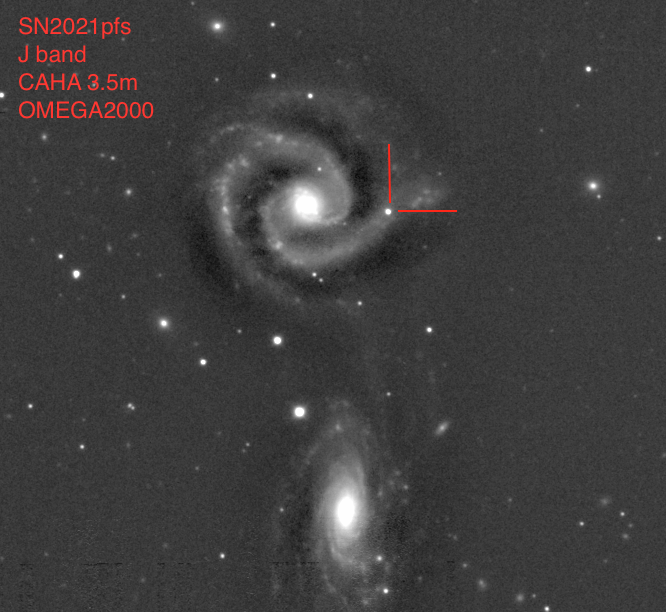Integral Field Spectroscopy of supernova host galaxies
Synthetic r-band image obtained by convoluting the filter transmission with the IFS spectra. Red circles correspond to apertures of 1 to 5 squared kpc centered at SN locations; the blue circle is the galaxy core; yellow dots are objects catalogued in the SDSS catalogue. More info...

Near-infrared imaging of type Ia supernovae
J-band image of the filed where type Ia SN 2021pfs occurred obtained with the OMEGA2000 camera mounted to the 3.5m telescope at the Calar Alto observatory. More info...
